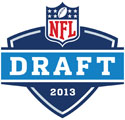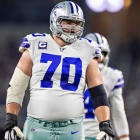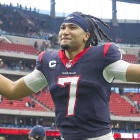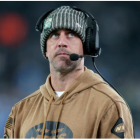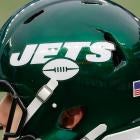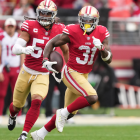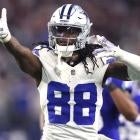Last week I broke down the offensive tackles in the draft and the dozen or so teams in need of a starter. The conclusion was that the supply of tackles would not meet the demand of the teams.
As good as the top of the first round looks for tackles, it appears some teams will be left searching for a starting tackle. Now, it’s time to take a look at the cornerbacks in the draft and the teams that need a corner.
Cornerbacks can’t be looked at as a group of athletes all playing the same position.
When I worked with Pete Carroll, he was interested in man-to-man cover corners who could succeed in "press" coverage. He wanted men who could get up in the face of the wide receiver, jam him, force an outside release and run with a wideout down the field mirroring the route. Quickness, speed and leaping ability were premiums with this sort of strategy.
Soon after that, I was looking at corners for Bill Parcells and Bill Belichick and they wanted big cover-2 zone corners who funneled receivers to the safety and were solid run-support players. They liked big physical corners with savvy zone-drop skills.
Sooner or later both defensive philosophies found themselves in nickel and dime packages and the need for a "slot" corner who could blitz or handle slot receivers like Wes Welker.
I will try to separate the man corners from the zone corners as well as identify the slot corners in this draft. Of course, there are always a few cornerbacks who can do it all and they should be grabbed early in the draft.
The top all-around corners are Dee Milliner, Xavier Rhodes and Des Trufant.
After that, the top man corners are Johnthan Banks, Darius Slay, Robert Alford, Tharold Simon and Will Davis.
The top cover-2 zone corners are David Amerson, Blidi Wreh-Wilson, Dwayne Gratz and Logan Ryan.
| More 2013 NFL Draft coverage | ||
|
When it comes to slot nickel players, I like Tyrann Mathieu, Jamar Taylor, Leon McFadden, and Jordan Poyer.
There should be enough corners to satisfy team needs. There may not be an elite lockdown corner like Darrelle Revis, but there are plenty of guys who can start in the NFL and function.
Last year, 32 corners were selected in the draft. Ten corners were taken in the top three rounds, so by Friday night I expect the top 10 corners off the board this year. The top three corners went in the top 17 picks, and it's very possible the top three this year will go in the top 17 picks.
Dee Milliner (Alabama), Xavier Rhodes (Florida State) and Des Trufant (Washington) could hear their names called by three of these teams in the top 17: Detroit, Cleveland, Miami, Tampa Bay or Pittsburgh.
After the top three are gone, the two Mississippi State corners, Johnthan Banks and Darius Slay, should be on the launchpad to be selected.
Teams at the bottom of the first round like New England, Atlanta and San Francisco have a big question to ask themselves: If they pass on a corner at this point, what will be left to select in the next round? Atlanta doesn’t pick in the second round, New England has to wait until pick No. 59 and only the 49ers have a top second-round pick. Usually more than half the teams in the NFL are going to take a corner and many teams will take two of them in a draft like this.
Teams like Washington, Chicago, Carolina, Philadelphia and any of the teams that pass in the first round will be eyeing a corner in the second round. If only three corners go in the first round, get ready for five corners in the second round and another two in the third round. After the Mississippi State corners comes D.J. Hayden, a fast riser from Houston coming off heart surgery, David Amerson (North Carolina State) and Jamar Taylor (Boise State).
Finally, a secondary coach I spoke with felt good about the depth at corner in this draft and talked about the half dozen corners over 6-feet and how important it is nowadays to find big corners like the Seahawks have to handle the tall wideouts and vertical-threat tight ends.
A scout simply said this about the class: It's a B+ at best and at worst.



